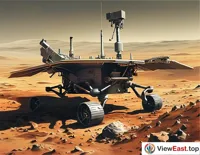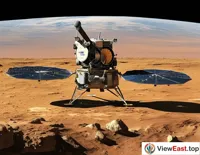







In the grand tapestry of China's space endeavors, the Tianwen-1 Mars mission stands as one of the most brilliant chapters. This mission signifies a colossal leap in China's deep space exploration and is a historic moment in the annals of Chinese space exploration. The name Tianwen-1 is derived from the ancient poet Qu Yuan's lengthy poem "Tianwen," symbolizing the Chinese nation's curiosity and exploratory spirit towards the mysteries of the universe, and implying the relentless pursuit of scientific truth.
The mission of Tianwen-1 is intricate, encompassing the orbiting, landing, and rover exploration of Mars. Its execution marks China as the second country in the world to independently master the technology for landing and roving exploration on Mars. The probe consists of an orbiter, a lander, and a rover (Mars rover), equipped with various scientific instruments to study Mars's geological structure, soil characteristics, climate, and environment.
The launch of the probe was a meticulously planned cosmic journey. On July 23, 2020, the Long March 5 rocket successfully sent Tianwen-1 into its intended orbit from the Wenchang Spacecraft Launch Site in Hainan, beginning a months-long journey through the Earth-Mars transfer orbit. After multiple mid-course corrections and a deep-space maneuver, Tianwen-1 gradually approached Mars, performed braking at the near-Mars point, and was captured by Mars's gravity, becoming an artificial satellite of the Red Planet.
Landing on Mars is the most thrilling part of the mission, known as the "seven minutes of terror." Within this brief period, the probe must reduce its speed from several kilometers per second to zero and successfully land on the surface of Mars. This process is entirely autonomous, with no real-time control from Earth, placing extremely high demands on the design and manufacturing of the probe.
The successful landing of Tianwen-1 has not only brought great encouragement to China's space endeavors but also contributed valuable data to global Mars exploration. It will help scientists better understand Mars's geological history, climatic conditions, and signs of potential life. Moreover, the data collected by Tianwen-1 will provide important reference information for future Mars exploration and potential human missions to the planet.